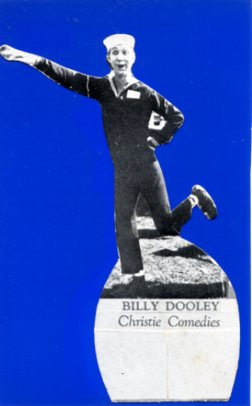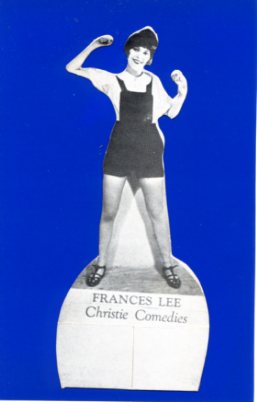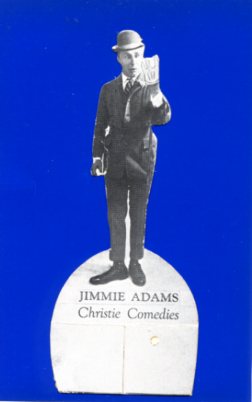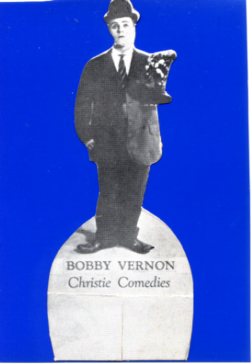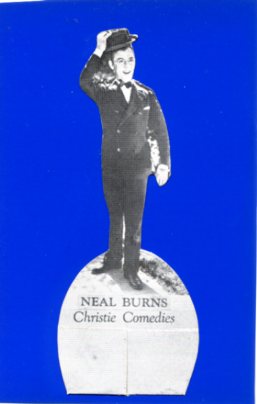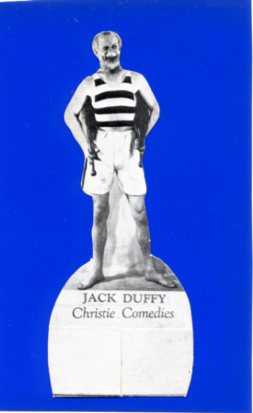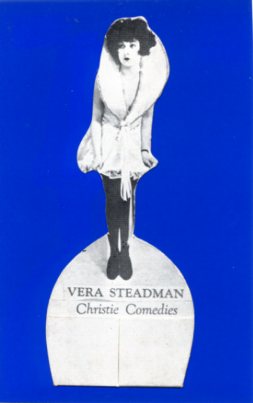
Cut 'em out, stand 'em up, and create your very own comedies!
One of the few "brands" to survive from the early days of film into the talkie era was Christie Comedies.
The studio, founded by Al and Charles Christie, had its roots in the studios of Nestor Films, itself a part of Centaur Films, founded in 1909 by Englishman David Horsley.
The studio began operations in New York, and in time began to do very well. Eventually the company took on Horsley's wife's cousin, Al Christie, eager to learn comedic directing. (Lahue 1966) Moving from one- to two-reelers, the company churned out comedies, dramas, and westerns.
In 1910 Christie was named manager of Nestor, and in 1911 he and Horsley moved operations from New Jersey to Los Angeles. There, Christie convinced Horsley to move from dramas to comedies, which continued to find success.
In 1916, Al and Charles Christie left Nestor to start their own studio, The Christie Film Company, with Horsley helping to finance the new venture. In 1916 they purchased the studio belonging to Fred Balshofer and his Sterling Film Company, located at the corner of Sunset and Gower — ironically the former home of Nestor Films — for $22,000. (Balshofer 1967) The studio continued to make short comedies throughout the silent era, releasing them either independently or through Mutual, then Educational Film Corporation, and later through Paramount (1927-1930).
The new studio's first production was "A Seminary Scandal" (1916) starring Billing Rhodes. Eventually the studio would go on to employ such future luminaries as director William Beaudine (one of Mary Pickford's directors), Colleen Moore, and Betty Compson.
From the beginning, Al Christie had earned a reputation for putting out "polite" comedies with a just a dash of slapstick. As described by Picturegoer in 1922, "He does not seek to raise the guffaw by resorting to the grotesque or the vulgar. The secret of this merchant in screen fun is to persuade the world to laugh with his shadow characters on the silver sheet, and not to titter at them." (Slide 1970)
In 1917, the studio built a brand-new facility, and as their pictures prospered, continued to build several new studios over the years. In 1927, Christie built a 30-acre studio, at a time when he was releasing 30 two-reel comedies a year.
Works Cited
Balshofer, Fred J. and Arthur C. Miller. One Reel a Week. Berkeley, CA: University of California Press, 1967.
Lahue, Kalton C. World of Laughter: The Motion Picture Comedy Short, 1910-1930. Norman, OK: The University of Oklahoma Press, 1966.
Slide, Anthony. Early American Cinema. New York: A. S. Barnes & Co., 1970.
